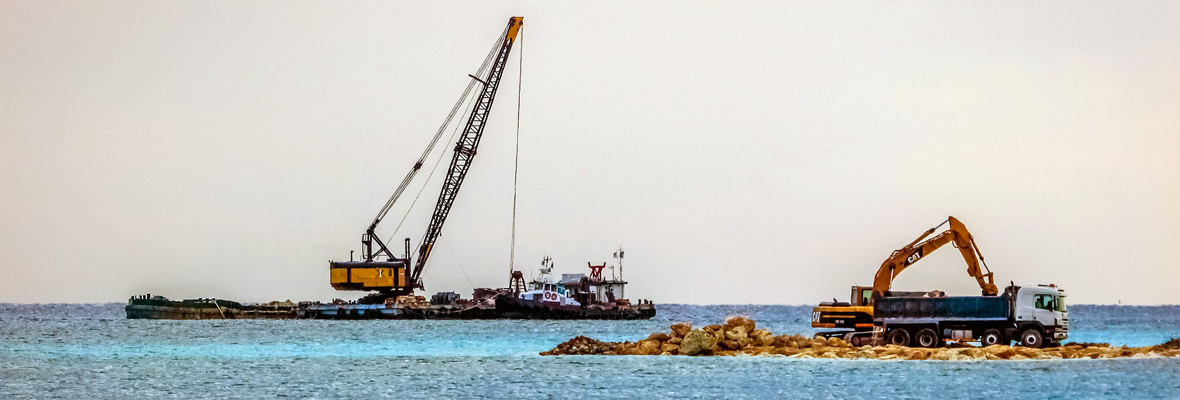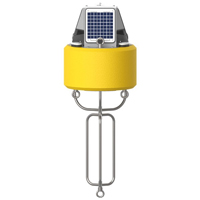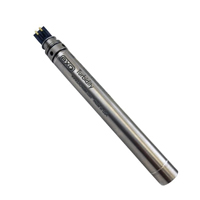Establishing any major commercial waterway or port demands dredging, as does expanding coastal infrastructure for sustainable energy developments and improved technologies. These kinds of capital dredging projects are often both costly and extensive—and even after they are completed, many demand ongoing maintenance dredging to remove any accumulated sediment. This kind of ongoing dredging helps managers facilitate continued access to docks, berths, jetties, and wharves, ensuring they are adequately sized for safe navigation.
In this post, we’ll cover why it’s important to monitor turbidity for dredge projects, and discuss the kinds of data we collect, and how to collect that data.
Monitoring turbidity for dredge projects
It has been clearly established that dredging projects can significantly affect local environments in negative ways. Monitoring sediment resuspension levels helps minimize the spread of any contaminants that might be released from a project, helping to prevent damage to the local ecosystem.
Typically, the design of this kind of turbidity monitoring system for a dredge project consists of an upstream turbidity monitoring station that provides background data and two downstream stations at affected locations. The upstream station helps managers establish baseline information on the ecosystem’s water quality parameters, including turbidity, dissolved oxygen, pH, temperature, and even possibly bathymetric data and current and tide data, depending on the site.
It is critical to ensure that the project’s design allows for the managers to establish baseline information across a wide range of seasonal fluctuations, environmental conditions, and weather events to understand how tides and currents will affect how re-suspended sediments move. This kind of baseline data allows the team to predict and prepare for as many hydrodynamic events—both common and unusual—as possible.
Project design and execution
Before beginning a dredging project, it is important to conduct a careful assessment for environmental impact. The assessment, ideally, will identify all stakeholders, account for background data in the analysis, and will define acceptable thresholds and limits for the project.
Data collection and calibration is an important part of the monitoring process for dredge projects because accurate data ensures compliance with all applicable regulations. The accuracy of the data, however, relies totally on accurate calibration at the project’s outset, and on regular maintenance.
Real-time measurement data is the most effective for this kind of project, and a turbidity monitoring system linked to a data buoy is the easiest way to acquire this kind of measurement data. A data buoy can provide far more comprehensive data than a shore-based system can because it can house sensors at various depths—including the deepest regions of the waterway. The buoy then transmits the data securely in real-time for access from any online device.
Buoy systems are easily customized to your project’s requirements and data goals. These systems can hold and power as many sensors as needed with a recharging solar panel and marine battery system. And thanks to multiple telemetry possibilities, it’s easier to feel confident that your dredging project will go smoothly—and if it doesn’t, you will know about any problems right away.
Dredge project monitoring with data buoys
Once the project has been assessed and a system has been designed, the system itself can be deployed. The buoy station network can be established based on local conditions in suitable locations around the dredge site. The dredging operator will receive real-time data from each station they will use to manage the operations and ensure the set thresholds are not exceeded. This, in turn, helps prevent expensive downtime.
Careful calibration and regular maintenance are absolutely required for turbidity monitoring equipment used on dredge projects. This kind of upkeep helps maintain equipment accuracy and keeps functioning within specifications. Maintaining instruments includes cleaning them unless your sensors have anti-fouling measures. Additional light-based turbidity sensors or sensors to monitor parameters such as conductivity, DO, pH, and temperature might demand further servicing in the field.
Popular maintenance intervals are weekly, bi-weekly or monthly, and mostly depend on site conditions, seasonal fluctuations, water temperature, and the potential for biofouling. While every team handles this part of the job differently, especially for more long-term dredge projects, it is wise to keep at least one complete extra set of sondes and sensors on hand. This way, your team can swap out any equipment having issues during routine maintenance visits without trouble.
Keeping spare buoy equipment is also key to preventing downtime on larger projects, although these systems are built to withstand punishing conditions. This is because even the most durable system can fall victim to accidental or intentional vandalism, or extreme weather and flooding.
To ensure your turbidity monitoring system stays robust despite the conditions of your dredge project, check on all major components for wear and tear every two weeks, and be sure that each month at a minimum your sensor access areas and solar panels are cleaned for fouling, buildup, and anything else that could hurt the system. Finally, about twice a year, verify that your moorings are sound, and replace them as needed based not only on your inspection but also based on the local conditions and the materials of the moorings.
Finally, a GPS locator should be part of your buoy system. This enables your dredge operator to confirm that each station is correctly placed, and allows for successful recoveries should anything go wrong.
In most cases, telemetry for dredge projects is via cellular networks or satellite; it is also possible to use radio if there is a line of sight. The right option is determined by the project parameters, including cost and site conditions.
Tying it all together
Dredge operations don’t need to be destructive or harm the environment around them. With the help of careful monitoring and the real-time data it provides, dredge operators can operate their equipment with confidence and monitor their projects with precision. These systems help guarantee maximum efficiency with minimum ecological impact.
To find out more about monitoring turbidity for dredge projects, contact the NexSens team. We have the ability to craft a unique solution for your application that meets your needs.
Equipment
The NexSens CB-150 Data Buoy is designed for deployment in lakes, rivers, coastal waters, harbors, estuaries and other freshwater or marine environments.
The EXO turbidity sensor is a digital smart sensor featuring welded titanium construction and wet-mateable connectors.
WQData LIVE is a web-based project management service that allows users 24/7 instant access to data collected from remote telemetry systems.





0 comments